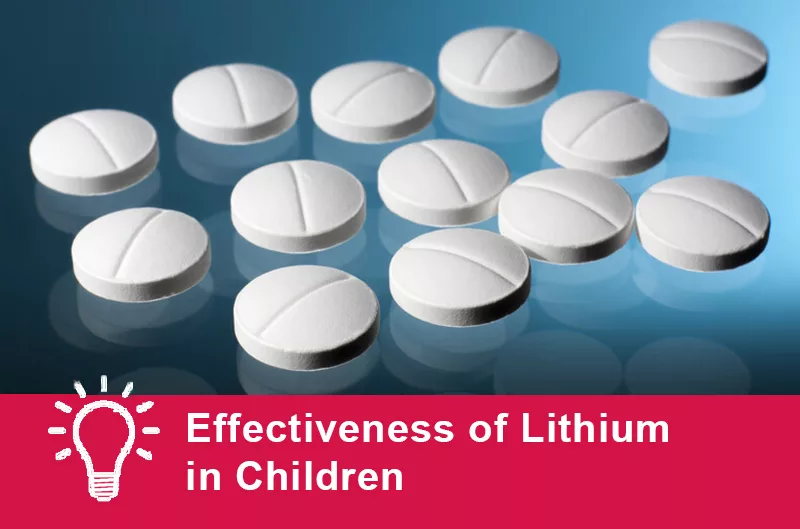Lithium’s effectiveness for mania in children is surprisingly robust. The Collaborative Lithium Trials, which is the largest double-blind placebo-controlled study to date, found lithium to be both effective and well tolerated in patients ages 7-17 with bipolar disorder (Findling et al, Pediatrics 2015; 136 (5):885-894).
For bipolar disorder, lithium is typically used when other mood stabilizers—such as valproate, carbamazepine, and lamotrigine—have not been helpful, and after failed neuroleptic trials with medications, such as risperidone and aripiprazole. Lithium is also employed in depressive disorders after adequate trials of two or three antidepressants.
Before starting lithium, consider reducing or eliminating possible medications that might aggravate the condition; such as antidepressants, if there is mood instability; stimulants, if there is sleep disturbance; and benzodiazepines, if there is withdrawal agitation (you may need to go very slowly with reducing benzodiazepines). Once you’ve made these adjustments, start lithium using the gradual approach described here.
Before starting lithium, you should order baseline studies, including a complete blood count with differential; a comprehensive metabolic profile, including creatinine and blood urea nitrogen; thyroid stimulating hormone and thyroxine levels; and an EKG. After completing the baseline studies, consider the following:
Subscribers can read the full article in The Carlat Child Psychiatry Report, which includes advice on how to talk with parents about the decision to use lithium with their children. Not a subscriber? Join here.
For bipolar disorder, lithium is typically used when other mood stabilizers—such as valproate, carbamazepine, and lamotrigine—have not been helpful, and after failed neuroleptic trials with medications, such as risperidone and aripiprazole. Lithium is also employed in depressive disorders after adequate trials of two or three antidepressants.
Before starting lithium, consider reducing or eliminating possible medications that might aggravate the condition; such as antidepressants, if there is mood instability; stimulants, if there is sleep disturbance; and benzodiazepines, if there is withdrawal agitation (you may need to go very slowly with reducing benzodiazepines). Once you’ve made these adjustments, start lithium using the gradual approach described here.
Before starting lithium, you should order baseline studies, including a complete blood count with differential; a comprehensive metabolic profile, including creatinine and blood urea nitrogen; thyroid stimulating hormone and thyroxine levels; and an EKG. After completing the baseline studies, consider the following:
- In young children, a reasonable starting dose might be 150 mg at night, followed by a trough level after about 5 days, taken 8-12 hours after the dose. The target blood level range should be 0.8-1.2 mEq/L. Dosage increases of 150 mg can be done week by week with serial trough blood tests to check the level.
- To try and get more even 24-hour coverage (half-life of lithium is 18-36 hours, with an average being 24 hours), dosing is typically increased by adding a morning dose, then an evening dose and so forth.
- If possible, it is always wiser to use lower doses. If the child’s behavior and symptoms stabilize at a lower level, there is then no need to increase the dose to achieve the 0.8–1.2 target range.
For children 13 and older, a starting dosage of 300 mg and dosage increments of 300 mg are more efficient, with the same target trough level. - All patients should be formally assessed and monitored at least every six months for abnormal involuntary movements. The Abnormal Involuntary Movement Scale (AIMS) works well. Some children cannot cooperate with this test, and so clinical observation and history from collateral sources (parents, teachers, etc.) must suffice.
Subscribers can read the full article in The Carlat Child Psychiatry Report, which includes advice on how to talk with parents about the decision to use lithium with their children. Not a subscriber? Join here.


_-The-Breakthrough-Antipsychotic-That-Could-Change-Everything.webp?t=1729528747)



